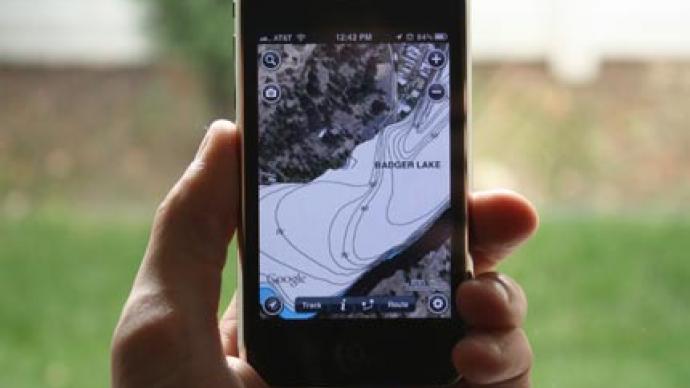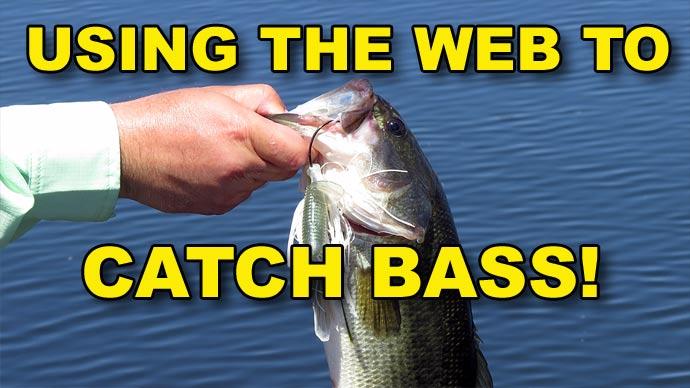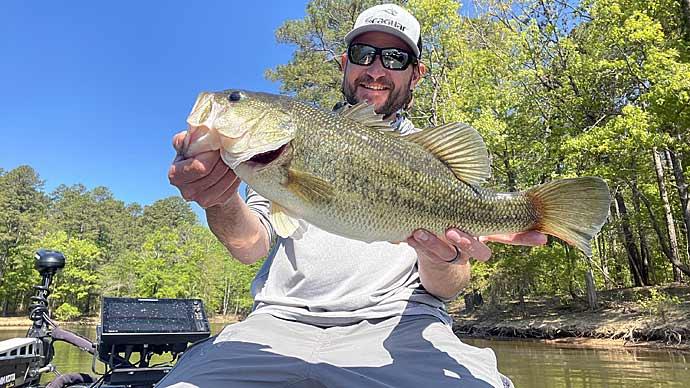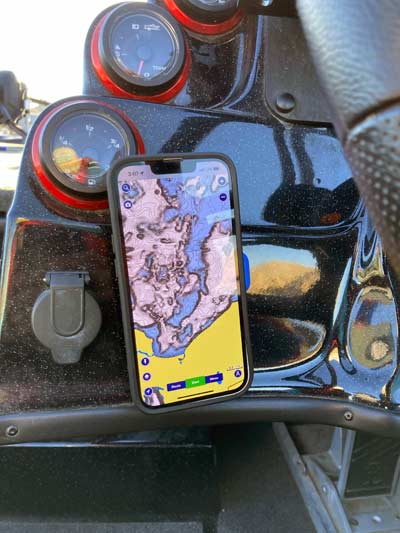
There's no denying that technology has drastically changed our world. Of course, some good and bad things have come from it, but it has made our lives easier when finding information. Everything you need to know is right in your hands when you are holding a smartphone, including plenty of great fishing information.
Finding your next best fishing hot spots is right on your phone and online. Here are a few ways to harness technology's power to catch more bass.
Mapping Apps
The days of paper maps are long gone, and while they are still relevant and helpful, mapping software is much more convenient and efficient. There are several options for those looking to add a mapping card to the electronics mounted on their boat, but you can also do it right from your phone.
The Navionics Boating app and Humminbird's One-Boat Network app have powerful maps and tools built into the program. They offer everything you need to look for areas to fish, mark them, and head to them when you hit the water. Instead of scrolling social media during downtime in the evenings, you can use your phone to find some great new fishing areas.
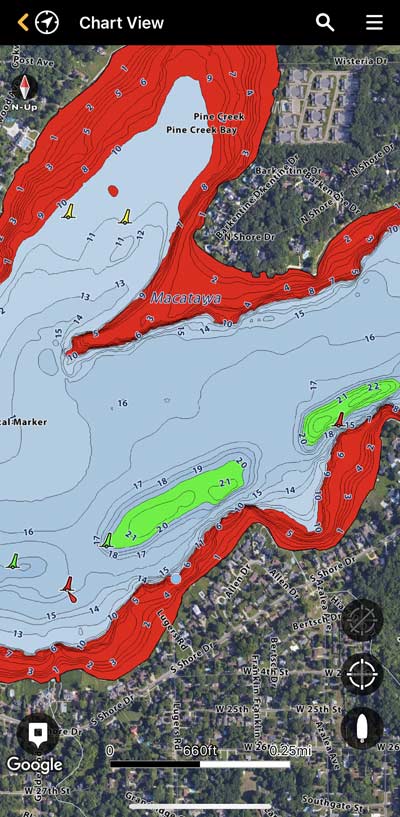
In addition to just seeing lake contours, you can also use these apps to find marinas, which often hold fish and can also provide access points to fish. The data included here will show boat launches and give you a place to launch your boat if you are unfamiliar with a body of water.
Another great tool included in these apps is that they show where docks are located, which are prime locations for bass in all seasons. You can easily see the most prominent groups of docks, which come out into deeper water, and also find the secluded docks likely to hold several bass if they are the only ones in an area.
Google Earth
One of the most powerful tools to scout out new waters is Google Earth, both on your computer or smartphone. The satellite images collected are some of the most valuable ways to find new bodies of water and learn more about your home waters.
The tool can be accessed on your phone, but the best option is to view it on a laptop or desktop computer through the Google Earth Pro program. This allows you to view historical images over the years. This is especially useful if the lake has been drawn down or went through low water cycles because underwater islands, humps, and points shown in low water images can be excellent spots when the water returns to higher levels.

Another valuable way to use Google Earth is to scout for backwaters on lakes and rivers. These small areas off of the mainlake will be easy to see with the satellite images, and you can gain knowledge about them from the pictures, seeing what type of structure and cover is there and the best way to access them.
Another way to utilize Google Earth is to look through historical images to understand where grass typically grows during different times of the year. It can also be helpful to see what areas of the lake have dirtier water and places with cleaner water. These clues will help you find new fishing hotspots and can be a very effective way to prepare for a road trip or tournament on a new body of water.
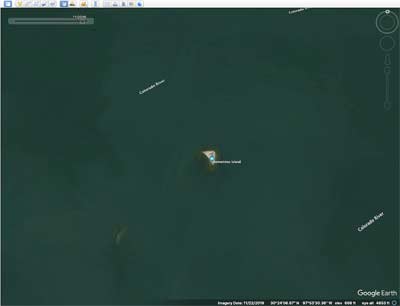
YouTube and Social Media
Social media and YouTube are full of good and bad information, but they are practical tools for learning about fishing and finding new fishing areas. Watching videos from trusted and reputable channels, such as Bass Resource, is a great way to learn about new products and fishing techniques, but you can learn something from any video posted online.
For videos filmed on specific bodies of water, you can learn a great deal about seasonal patterns and types of places to fish. This is not to steal spots, but seeing an angler catch fish along a rocky bank with a crankbait for a video posted in the spring can help point you in the right direction for things to look for. With the advent of live cameras in professional bass tournaments over the years, you can also rewatch these videos and learn a great deal about the techniques and types of areas to look for.
Social media and online forums are great tools for getting tidbits about lakes. Lake-specific groups will showcase what the fish are biting and the size of the fish being produced. You can also scour tournament results to understand the winning weights and what the lake can kick out. The more you read and see about a specific lake, will give you more data points, and once you start seeing areas, techniques, and keywords popping up more than once, it makes it even more credible and something you can use to help you catch more fish.
Love it or hate it, technology is here to stay. It continues to be a bigger part of our lives, and fishing is no different. The great thing about fishing is that you can take a simple approach and head to the shore of a pond and catch fish, or you can use technology to make yourself more efficient on the water. There is no wrong way to do it as long as you are having fun.


